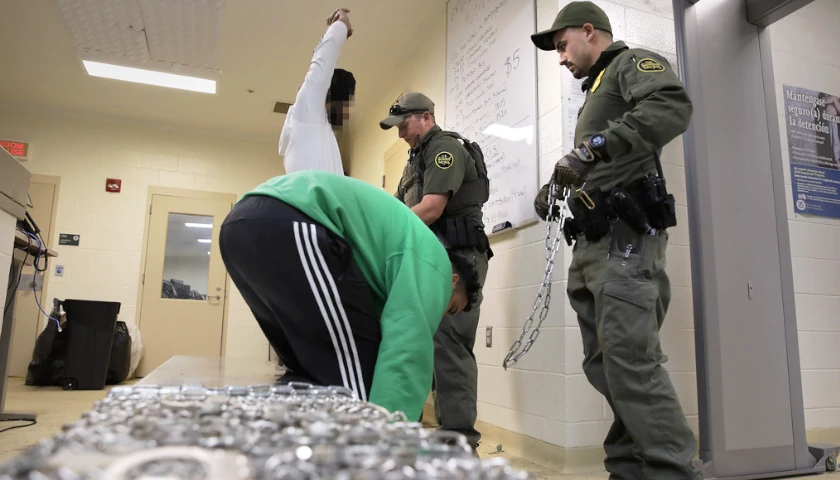The nation’s future doctors who are currently members of the Medical Student Section (MSS) of the American Medical Association (AMA) have called for the organization to remove language from its current policy that states “family life education” should primarily be taught “in the home,” and replace it with language that states comprehensive sex education should be taught in schools.
According to a report at MedPage Today, during the AMA’s House of Delegates meeting in Chicago, some MSS delegates were in agreement with a representative from the Centers for Disease Control and Prevention (CDC) and an alternate delegate physician from the California Medical Association to promote shifting of funding away from curricula that emphasize delaying sexual activity and toward comprehensive sex education in schools at all levels.
These delegates and officials are promoting the type of curricula produced and taught by abortion giant Planned Parenthood, now also the nation’s second-largest provider of transgender hormone treatments, and LGBTQ activists seeking access to school-age children.
We're working w/@sexedhonestly @SIECUS @AdvocatesTweets @GLSEN & @HRC to call for LGBTQ-inclusive sex ed:https://t.co/cJksxIba4I #EqualSexEd
— Planned Parenthood (@PPFA) December 2, 2015
In the video below, resident Haidn Foster, M.D., chair of the AMA MSS, described the organization’s student section as a “policy powerhouse within the AMA.”
Foster, an LGBTQ activist, named what he considers to be some of the MSS’s “policy wins,” including the establishment of the AMA position that asserts “racism is a threat to public health,” and other “advances in LGBTQ policies.”
“Studies have found time and again that abstinence-based ‘sex ed’ has no effect on decreasing teen pregnancy rates and does not delay the initiation of sexual activity,” Meghina Peesapati, an MSS delegate from Indiana, said, according to MedPage.
Peesapati reportedly reasoned the removal of the family as the center of sexuality instruction is necessary because children of parents with different cultural backgrounds, as well as children of immigrants and foster children “do not have access to parents who might talk to them,” she said.
Capt. Joshua Schier, M.D., MPH, chief medical officer of the U.S. Public Health Service Commissioned Corps, who represented the CDC, said less than half of all high school students receive sexual health education in school, as do fewer than 18 percent of all middle school students.
“Students who participate in these programs are more likely to delay the initiation of sexual intercourse, have fewer sexual partners, [and] have fewer experiences of unprotected sex,” he asserted, reported MedPage.
The same report observed Stacey Ludwig, M.D., an alternate delegate from the California Medical Association, said adolescents who are educated about sexual health are less likely to contract STIs and have unintended pregnancies.
Ludwig called for a national approach to comprehensive sex education that includes LGBTQ sex and a move away from sex education curricula that “negatively frame homosexuality” in their content.
“That also needs to end,” she said.
However, Texas delegate William Gilmer, M.D., opposed the elimination of language that centered on the family’s role in discussions of sexual health.
“[W]e should continue to recognize that the primary responsibility for family life education is in the home,” he said.
Abortion and LGBTQ activists generally condemn abstinence education as ineffective, but, in 2018, the American College of Pediatricians (ACPeds) noted that most comprehensive sex ed (CSE) programs are based on the concept that sexual activity for teens is normal and acceptable:
CSE programs in America’s schools have not demonstrated long-term effectiveness at increasing sexual abstinence among adolescents, nor have they been shown to increase long-term condom and contraceptive use among sexually active youth. School-based sexual risk avoidance (SRA) curricula, traditionally known as abstinence education, focus on the primary public health principle of risk avoidance and thereby uphold the highest attainable standard of health for all students. School-based SRA programs have been shown to significantly delay the onset of sexual debut among adolescents without diminishing condom use among those who are already sexually initiated. The American College of Pediatricians therefore recommends the adoption of sexual risk avoidance (SRA) programs by all school districts in lieu of curricula described as comprehensive sex education (CSE).
Regarding the oft-cited rise in cases of sexually transmitted disease (STD) as a reason why CSE in schools is necessary, ACPeds noted a recent assessment of the effectiveness of CSE in America’s schools over the last 25 years found “no evidence of effectiveness at producing sustained reductions in teen pregnancy or STDs” in U.S. school-based CSE programs.
Authors at the Institute for Research & Evaluation concluded:
There were only a few initial findings of increased teen abstinence (three programs in four studies) or condom use (four programs) 12 months after the program, but evidence from multiple replication studies did not confirm most of the original positive results. In fact, two of these studies showed harmful program effects. We found no evidence of effectiveness for CSE’s purported dual benefit—there were no sustained increases in both teen abstinence and condom use (by sexually active teens) within the same target population.
The study found high CSE failure rates in delaying teen sexual initiation (88 percent) and reducing unprotected sex (94 percent), and concluded five school-based CSE programs actually “produced significant negative effects.”
“[T]hree increased rates of teen sex, one increased teen pregnancy, and one reduced contraceptive use,” the authors wrote.
“In contrast, there were seven school-based abstinence education (AE) programs—the often-mentioned alternative to CSE—that produced sustained (12-month) delays in teen sexual initiation,” the researchers noted. “Also, nine studies tested AE impact on condom use and none found a negative effect, strong evidence that AE does not reduce teen condom use.”
“[T]he research evidence indicates that CSE has essentially been ineffective in U.S. school classrooms and has produced a concerning number of negative outcomes,” the Institute’s authors concluded. “The evidence for AE looks more promising, enough to justify prioritizing additional research.”
– – –
Susan Berry, PhD, is national education editor at The Star News Network. Email tips to [email protected].






Hollywood, television, social media, video games, school, all these places influence teenagers and encourage them to be sexually active, or promote casual sex as a benefit to their lives. When “they” teach the teens about sex are they going to mention of the negative and dark side of this type of sex, the STD’s which can lead to infertility, the likelihood of unwanted pregnancies and subsequent abortions and the downgrading of the spiritual and sacred aspect of sex for married couples? Teaching abstinence education to teens doesn’t have a chance in our current society where little children a watch drag queen story time at public libraries.
All that comes to my mind is another step toward Sodom and Gomorrah.
As if anyone trusts the AMA or CDC or any of the other politically biased “medical” organizations. Keep your kids out of public schools and you won’t have to worry about whether or not the government is brainwashing, corrupting, sexually grooming, or physically abusing them. Especially don’t trust them if they swear these things DON’T go in in your district.